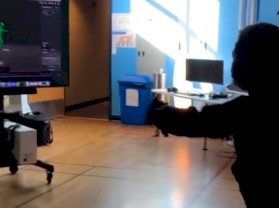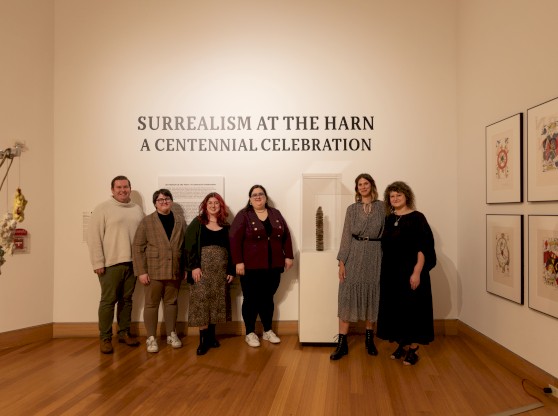A new 7-ton, high-tech nanoscale x-ray scanner is helping to innovate the engineering and science fields, but a School of Art and Art History alumnus found his own use of the machine.
Charlie Cummings, 2011 MFA in Ceramics graduate and adjunct assistant professor in the School of Art + Art History, collaborated with the University of Florida Nanoscale Research Facility (NRF) to produce high-quality 3D scans of objects in nature.
The new NanoCT Scanner housed in the NRF produces non-destructive 3D scans with a sub-micron resolution. Cummings was able to use the scanner to create high-resolution 3D images of a pinecone, starfish and small snail shell without damaging the objects.
The machine uses an electron beam that enables the scanner to see inside the objects, which produces a unique image file that can then be 3D printed into a realistic model. For objects like the pinecone, all of the intricacies are easily captured using the NanoCT scanner that would be next to impossible with other visual 3D scanning.
The starfish scan in particular surprised Cummings. He said the starfish was dried and felt like a solid form, but the scan reminded him that the starfish has a water vascular system.
“In the high-resolution scan, the starfish looks like a sponge instead of a solid form,” Cummings said.
The 3D image files can be selected in parts to print cross-sections of the scanned items. This opens up the opportunities especially in education. For example, classrooms could easily have access to realistic models of the insides of the specimens like the starfish Cummings scanned.
Cummings got the idea for the project in the spring during the Building STEAM symposium at UF. He was in a collaboration brainstorming session with individuals from the NRF during the science, technology, engineering, arts and mathematics event.
One of the topics that the group discussed was the new 3D scanner that the NRF had just brought online, Cummings said. The group discussed objects they could scan to help the UF community understand how the machine might be used for research.
Brent Gila, Director and Research Scientist at the NRF, was among the participants in the session.
Gila said many different fields use the NanoCT Scanner from museums to the military.
For museum curators, the scanner can see inside artwork, fossils and specimens without tampering with or damaging the items, which allows for new perspectives on valuable works.
There has been a lot of debate over historical pieces of art, Gila said. The Mona Lisa for example is thought to have another painting underneath it, but taking off the top layer off of such a famous artwork is almost unthinkable.
“Now you take that painting and scan it,” Gila said, “and maybe with enough pigment change or density change you can see the different layers beneath it.”
Scanners of this type can also be used in military defense to analyze foreign hardware that is being used for operations.
Gila said that they anticipate the scanner being used so much that the price will only be between $10 and $15 per hour. It will be available for use 24/7.
The NRF is an auxiliary to the university, meaning it provides services for hire and equipment for use at a fee. It is heavily subsidized, or funded, by the College of Engineering and the university.
Researchers can rent out the equipment “a la carte” for an hourly fee on the NRF’s website, Gila said.
Cummings said that he hopes the collaboration project will raise awareness of the accessibility and versatility of the scanner.
He finds collaboration between the arts and sciences to be extremely valuable.
“The idea that an individual is only an artist or a scientist, a writer or an engineer is a relatively recent development in human history,” he said. “Some of our greatest thinkers were - and still are - individuals with diverse interest who studied science and art and whatever interesting thing came their way.”
He said that although different disciplines teach specific techniques, the differences are in the desired outcome rather than the actual use of our intellectual abilities.
“Interdisciplinary collaboration is very important in an age where people tend to identify themselves with their profession or field of study instead of as a well-educated person with many interests,” Cummings said.




